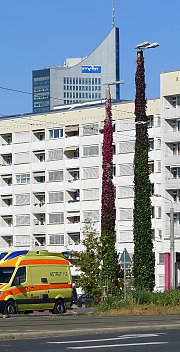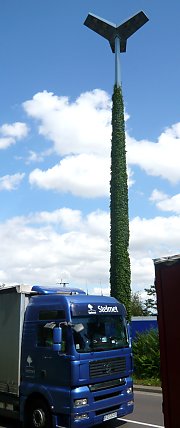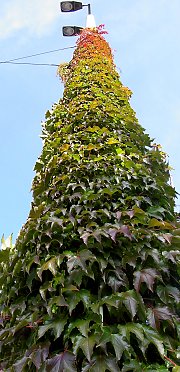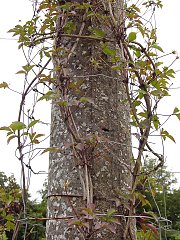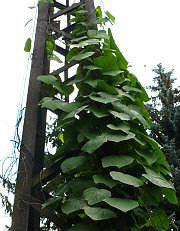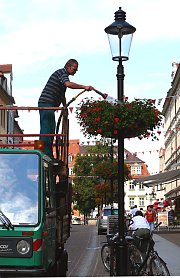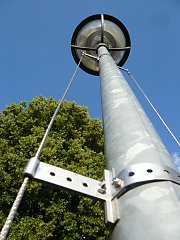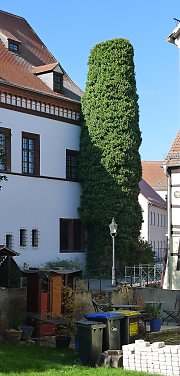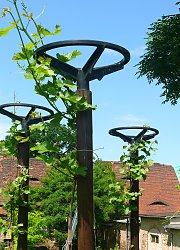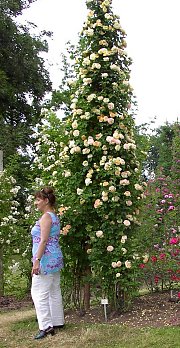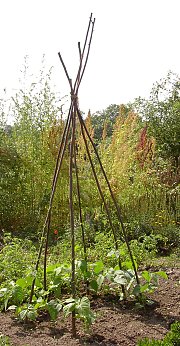Trellis Obelisks in Streets and Gardens (Masts/Posts...)
With climbing plants, free-standing vertical structures in public spaces and in the garden can be transformed into green obelisks. Masts, posts, lampposts, chimneys, etc.. (elements which have no load from above) can become 'living,' so to say. *Note: supports/columns within a building's structure are considered in a separate section.) Greening with self-climbing plants or using climbing supports are both possible here... In the house garden, single poles or interconnected posts/rods (teepee style arrangements, for example) can become a decorative element covered in greenery.
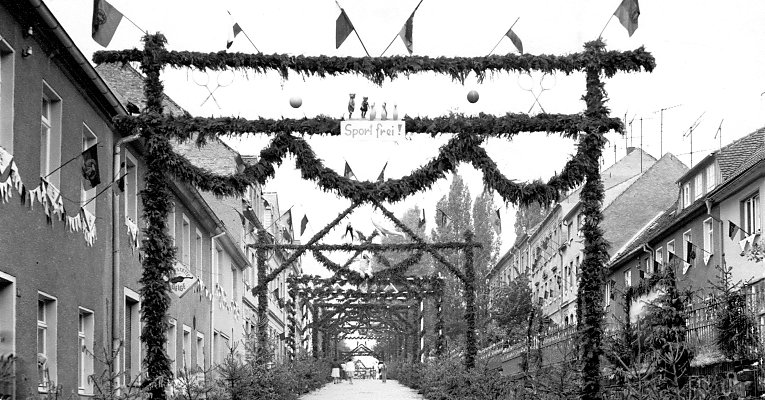
Lamp Posts and Masts in the Streets
The presence of a climbing plant on a mast or street lamp should not prevent it from fulfilling its function (as a light source or holder of guy-ropes), so the maintenance of climbers on these elements is all the more important.
The wild vine P. Tricuspidata (Virginia creeper) is often used as a self climbing plant for obelisks. It grows well in poor, compacted soil and has another advantage: when it reaches the top, its shoots do not climb horizontal ropes like tension and electrical lines. The vegetation thus remains limited to the mast itself.
The vast majority of climbers will easily climb on a lattice 'tower.' On smooth masts, however, installing a climbing aid is required, which is not easy on concrete masts or tubular steel. Inexpensive wire mesh/netting is therefore often used for greening streets and public spaces. The attached wire mesh/grid (spanning the circumference of the mast) should be run only up to half the height of the post to limit plant growth and to keep any trellis wires or plant growth free of tram lines/electric lines, etc.. It is also possible to limit the height of growth by choosing a less-vigorous and slower-growing plant, such as Menisperomum (see photo).
The firm Thomas Brandmeier offers another alternative for masts-- see suppliers: cable and wire supports fastened with stainless steel products (belts or straps). The adherence of the plants by means of binding material (velcro strip or rubber belts) directly on the support is also possible, as is a greening with self-climbers.
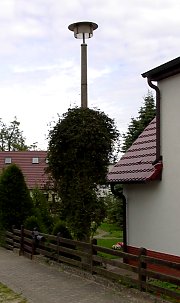
Street lamp greened with clematis montana using wire mesh
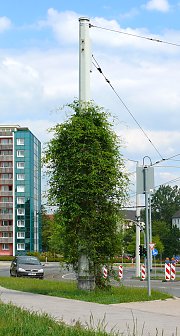
Object greening of a streetcar (tram) mast with overhead tension cables, clematis vitalba on wire mesh
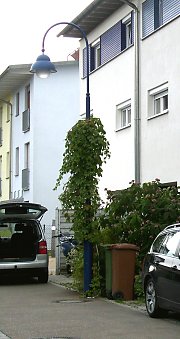
Street lantern greening with thicket creeper P. Inserta on a climbing aid
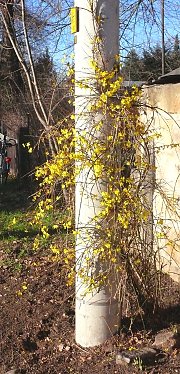
Lamp post tied with a blossoming winter jasmine
Greened Chimneys and Smoke Stacks
Free-standing chimneys, smoke stacks, ventilation pipes from underground garages, and the like are also elements suitable for greening. All that was described above for 'masts' applies here. You can also find other but similar examples under the section Drainpipes/Downpipes.
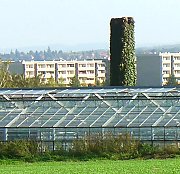
Chimney of an old market garden greened with ivy
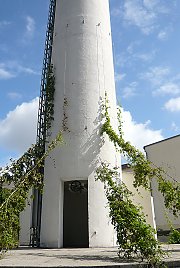
Greening of a chimney stack: hops on wire-cables
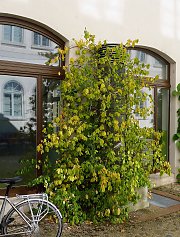
Ventilation shaft with slow growing wintercreeper on vertical cables
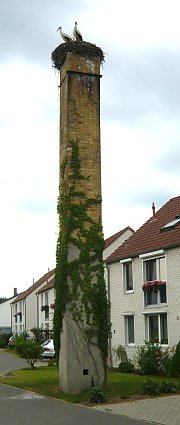
This chimney of an old market garden was integrated into a new residential area and greened with Boston ivy P. Tricuspidata
Trellis Obelisks, Staffs, and Pyramids in the Garden
There are no limits regarding creative 'masts' in the house garden: trellis posts, pyramids, and obelisks from all possible materials can be created and greened. You can find similar examples under our section on staked vines.

